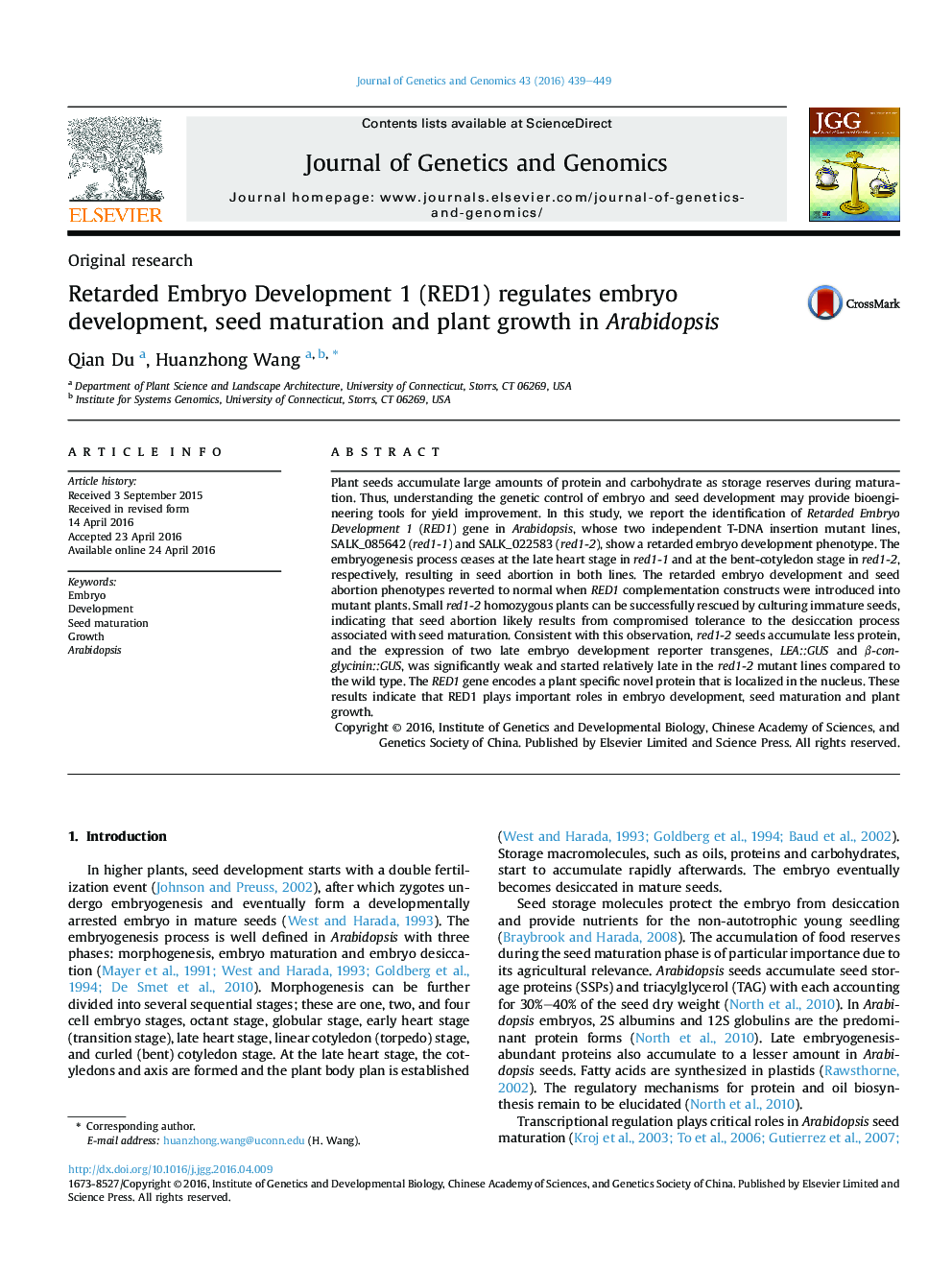| Article ID | Journal | Published Year | Pages | File Type |
|---|---|---|---|---|
| 2787283 | Journal of Genetics and Genomics | 2016 | 11 Pages |
Plant seeds accumulate large amounts of protein and carbohydrate as storage reserves during maturation. Thus, understanding the genetic control of embryo and seed development may provide bioengineering tools for yield improvement. In this study, we report the identification of Retarded Embryo Development 1 (RED1) gene in Arabidopsis, whose two independent T-DNA insertion mutant lines, SALK_085642 (red1-1) and SALK_022583 (red1-2), show a retarded embryo development phenotype. The embryogenesis process ceases at the late heart stage in red1-1 and at the bent-cotyledon stage in red1-2, respectively, resulting in seed abortion in both lines. The retarded embryo development and seed abortion phenotypes reverted to normal when RED1 complementation constructs were introduced into mutant plants. Small red1-2 homozygous plants can be successfully rescued by culturing immature seeds, indicating that seed abortion likely results from compromised tolerance to the desiccation process associated with seed maturation. Consistent with this observation, red1-2 seeds accumulate less protein, and the expression of two late embryo development reporter transgenes, LEA::GUS and β-conglycinin::GUS, was significantly weak and started relatively late in the red1-2 mutant lines compared to the wild type. The RED1 gene encodes a plant specific novel protein that is localized in the nucleus. These results indicate that RED1 plays important roles in embryo development, seed maturation and plant growth.
